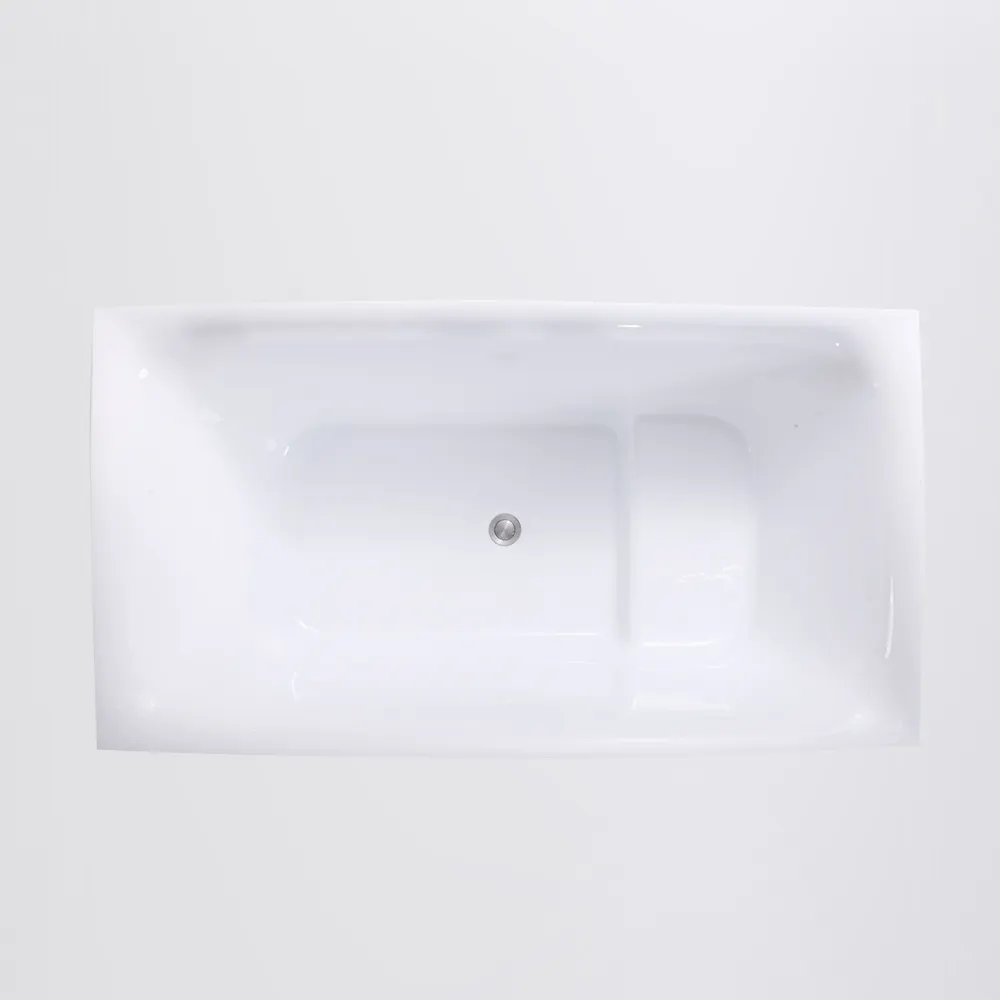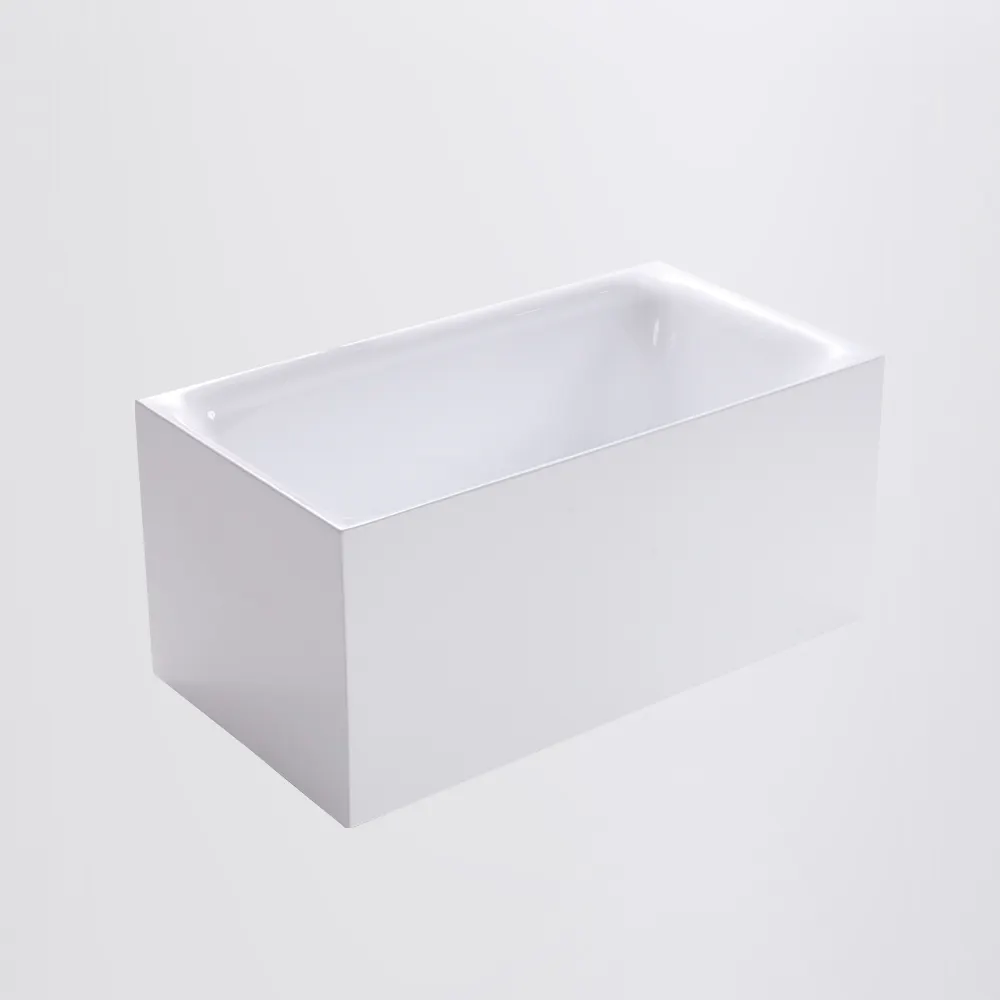שילוב אסתטיקה בשימוש יומיומי
חדרי רחצה מודרניים התפתחו מעבר לתפקוד הבסיסי. הם הפכו למרחבים מיוחדים שמשקפים סגנון אישי, העדפות בבריאות ואיכות מוגזמת. בין לתכונות המרכזיות שתרמו להתפתחות הזו, האמבטיה בולטת כאלמנט מרכזי. ממגוון דגמים חלקים ועיליים ועד אמצעים חיסכוניים במרחב, בחירת העיצוב הנכון יכול להגדיר מחדש את האווירה והשימושיות של חדר הרחצה.
בחירת האידיאל מיכל רחצה הבחירה באגרת לא מוגבלת רק לגודל ולחומר. היא כוללת הבנת המרחב, התאמה לסגנון העיצוב האישי ושקול של הרגלי היומיום. במאמר זה נבחן סגנונות שונים של אגרות ואיך הם משלבים בצורה מיטבית בין תפקודיות לצורה במרחצאות מודרניות.
סגנונות אגרות מודרניות
אגרות נישאות במרחבים פתוחים
עצמאי אמבטיות הפכו לסמל לזו extravagance מודרנית. עיצובים אלו פועלים במיוחד במרחצאות רחבות, בהן הן יכולות לשמש כמוקד מראה. נגישותן בשלוש מאות ושישים המעלות ואסתטיקה פלסטית מאפשרים להציב אותן בצורה יצירתית – ליד חלונות, במרכז החדר או לצד קירות דקורטיביים.
מעבר לאסתטיקה, אגרות נישאות מגיעות בחומרים מגוונים כמו אקריליק, ברזל יציקה או רזין אבן. קווי החזות הנקיים והצורות היציבות שלהן מתאימות הן לעיצוב מינימליסטי והן לעיצוב מגוון, ומציעות גמישות ללא פגיעה בתפקודיות.
אגרות סלון למבנים קומפקטיים
אגרטנים סטנדרטיים נותרו פופולריים עבור חדרי רחצה קטנים או עבור אלו שמעדיפים יעילות. מונחים בין שלוש קירות, סוג זה של אגרטנים חוסך שטח תוך שילוב חלק בתוכנית חדר הרחצה. הוא מתאים במיוחד להתקנות המשלבות מקלחת ואגרטן.
עיצובי alcove הופכים למשליים יותר, עם גימורי נקיים, קווים ארגונומיים ופתרונות איחסון חכמים המשולבים בקירות הסביבתיים או באבניות סמוכות. הצדדים הסגורים גם הופכים אותם לבטוחים יותר לשימוש של ילדים או קשישים, מה שמוסיף ליתרונם הפונקציונלי.
בחירות החומר וההשפעה שלהן
אגרטנים מאקריליק: קלים וגמישים
אקריליק נותר אחת הבחירות הפופולריות ביותר לאגרטנים. המבנה הקל של החומר הופך את ההתקנה לנוחה ומהירה יותר, בעוד שפני השטח הלא פורתיים שלו עמידים בפני כתמים ועיוות צבע. אגרטנים מאקריליק זמינים באלפי צורות וצבעים, ומספקים מענה לצרכים עיצוביים מותאמים אישית.
תחזוקה גם פשוטה יותר עם אקריל. חריצים קטנים יכולים להיות מופשטים בקלות, ומים חמים עם סבון עדין בדרך כלל שומרים על נקיותו. זה הופך אותו לאידיאלי עבור משקי בית המחפשים גם אסתטיקה וגם נוחות.
אמבטות ברזל יצוק: סבלנות עם אלגנטיות
אמבטיות ברזל יצוק הן סינומי עם עמידות ושיקוף נצחי. מכוסה עם מקר, האמבטיה הזאת שומרת חום יותר זמן, מאפשרת לניזונים ארוכים. משקלם הרב מספק תחושה של קביעות ויציבות שחלק בעלי הבתים מעריכים.
בעוד שהם מאתגרים יותר להתקין בשל משקלם, אמבטיות ברזל מגיעות ביצועים ארוכי טווח ואלגנטיות קלאסית, מה שהופך אותם מושלמים לסגנונות חדר אמבטיה וינטג או מעבריים.
תכונות עיצוב שמגדילות את משיכת האמבטיה
צורות ארגנומיות עבור נוחות מוגברת
עיצובי אמבטיה מודרניים מרכזים את תשומת הלב על נוחות המשתמש. פנים מעוצבות אנרגonomית תומכות בגב, צוואר וכתפיים במהלך רחצה ממושכת. דגמים מסוימים מציגים קצוות נוטים או כרית ראש מובנית המתאימה למצב גוף טבעי.
פרטים המונעים על ידי נוחות הם מועילים במיוחד לממשיכי דיור בריאותיים. חוויית רחצה מרגיעה הופכת ללא רק מותרת, אלא לритואל שיקום יומיומי שמתמך בעיצוב מחשבה.
אחסון מובנה ואביזרים פונקציונליים
אמבטיות מודרניות מגיעות désormais עם מקלטים מובנים, שליטה בניפוח מוגזם ואפילו משטחים מחוממים. שיפורים אלו מעצימים את השימוש ופוחתים את הכאוס בסלון הרחצה. אביזרים כמו עגלות רחצה, מגשים לפי מידה, תאורה LED ומדבקים מותאמים אישית את חוויית הרחצה.
על ידי שילוב של סגנון ותועלת, תכונות אלו עונות על הדרישות הכפולות של טעם מובהק ונוחות יומית. המשתמש נהנה מנהל יומי סדיר מבלי להתפשר על שלמות העיצוב.

מגמות בצבע ו בגימור ב 2025
איקוסטיקה מונוכרומטית וגימורים מתלים
אחד המגמות המובילות בקרב אמצעי האמבטיה כולל פלטת צבעים מונוכרומטית, במיוחד לבן מטוש, פיחם, ונייטרליים ארציים. סיומים מטושים מהווים רומנטיקה ואופייניים לחוויה טקטילית עדינה שחסרה באמבטיות מבריקות.
גימורים אלו משתלבים היטב בחומרים טבעיים כמו עץ, אבן או מתכת מברושת, ומאפשרים לעוצרים ליצור סביבות שקטות הדומות לספא. האלגנטיות המושתקת של אמבטיות מתלה מעצימה את תחושת השלווה במרחבים אישיים.
צבעים בולטים וstatements אומנותיים
בעוד שטונים מינימליסטיים שולטים, חלק מהמעצבים אומצים גוונים בולטים כמו תכלת עמוקה, ירוק אמטיסט או שחור. גימורי האמבטיה הדרמטיים הללו יוצרים הצהרה חזקה, במיוחד במרחבים otherwise muted.
בחירות כאלו מתאימות גם למלאכי בתים שמחפשים להציג אישיות באמצעות עיצוב אמיץ. בצירוף קרמיקה או ציוד משלימים, אמבטי צבעוניות הופכות את חדר האמבטיה הסטנדרטי ליעד עיצובי.
חדשנות חכמה וידידותית לסביבה
עיצובים לחיסכון במים
קיימות השפעות על ייצור אגרות רחצה. מודלים חדשים נועדו להפחית את צריכת המים מבלי להקריב נוחות. תכונות כמו סינון זורם נמוך ועיצוב פנים מותאם מבטיחים שימוש יעיל במים בכל רחצה.
בעלים על בתים בעלי תודעה סביבתית יכולים עכשיו ליהנות מרחצות ארוכות ללא תחושת אשמה, כשהם יודעים שהאגרה שבחרו תורמת לפס כדורגל קטן יותר. מודלים אלו עומדים בדרישות של תעודות בנייה ירוקות וגם מתאימים לתוכניות החזרי מס.
שילוב טכנולוגיה לחיים חכמים
Agrות רחצה מתקדמות טכנולוגית נמצאות בעלייה. שלטים מסך מגע, מערכות שמע מובנות ומערכות שליטה בטמפרטורה מחוברות לאפליקציות הן רק כמה מהחדשנות המשנות את חוויית הרחצה.
Agrות יוקרתיות מסוימות כוללות גם תאורת כרומותרפיה, מסאז'רים מובנים ופונקציות ניקוי עצמאיות. חדשנות אלו הופכות את האגרה מחלקה איננה רק נכס, אלא מרכז לבריאות מתקדמת.
התאמה לסגנונות חיים ייחודיים
פתרונות מותאמים לפי מרחב
כל בית מאפיין דינמיקות מרחביות שונות. יצרנים מגיבים עם אגניות בצורות מותאמות אישית, כגון עיצובים פינה לאזורים צרים או צורות אסימטריות לשרשורים לא שגרתיים. הדבר מאפשר למשתמשים למקסם את התועלת מבלי להתפשר על הסגנון.
אמבטיות מותאמות אישית מציעות גם גמישות בפיזור – ליד חלונות, מתחת לחנויות אור או בחדרי אמבטיה ראשיים. האמבטיה הופכת לתוספת מותאמת אישית המשלבת בצורה הרמונית בתוך האדריכלות של הבית.
נגישות ועיצוב כוללני
עיצוב חדרי אמבטיה כוללניים זוכה לחשיבות גוברת. אגניות עם מושבים מובנים, סף נמוך או פתח צדדי תומכות במשתמשים קשישים או בעלי מוגבלות. תכונות אלו מבטיחות כי ביטחון ואלגנטיות יכולים לרצות יחד בחדרי אמבטיה מודרניים.
עם טווח רחב של דגמים נגישים זמינים כיום, אין צורך להתפשר על מראה חזותי כדי לאפשר צרכים של ניידות. האגנית הנכונה יכולה להיות גם אופיינית וגם פונקציונלית באופי כוללני.
שאלות נפוצות
איזה חומר אגנית הוא הטוב ביותר לדיור מושך?
ברזל יציקה נחשב לעיתים קרובות לאפשרות העכירה ביותר, הודות למצע האמייל שלו והבניה המוצקה שלו. הוא עמיד בפני בלאי ושומר על המראה שלו עשורים רבים.
האם אגרטנים עצמאיים קשים יותר לניקוי?
אגרטנים עצמאיים קלים לניקוי באופן יחסי, אם כי הגישה לרצפה שמתחתם יכולה להיות מורכבת יותר. בחירת דגמים עם בסיסים נגישים או מיקום מיטבי יכולים להפחית את דאגות התפעול.
איך בוחרים את הגודל הנכון של אגרטן לחדר הרחצה?
התחילו במדידת השטח הזמין ושקלו את הנוחות של המשתמש. ודאו שיש מקום מספק מסביב לאגרטן ובחרו צורה שמתאימה למגוון שלכם.
האם אגרטנים מודרניים יכולים להיות חוסכי אנרגיה?
כן, רבים מהאגרטנים המודרניים נועדו לחסוך מים ולשמור על החום בצורה יעילה. לחלקם אפילו יש שכבות בידוד כדי לשמור על מים חמים לאורך זמן, וכך להפחית את צריכת האנרגיה.

